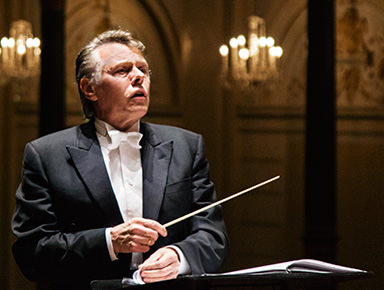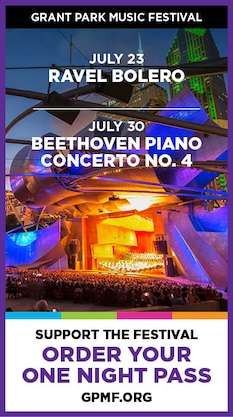Jansons and Bavarian orchestra deliver a “Leningrad” for the ages
This season’s Symphony Center Presents orchestra series came to a close Sunday afternoon with a performance by the Bavarian Radio Symphony Orchestra (BRSO) at Orchestra Hall. The entire program was devoted to a single work—Shostakovich’s Symphony No. 7 (“Leningrad”)—and chief conductor Mariss Jansons led an impeccable performance of the mammoth opus.
Jansons’ command of Shostakovich’s sprawling score was apparent from the outset, as he infused the Allegretto’s assured opening theme with a boisterous swagger. In gentler moments Jansons would palm his baton in his left hand to elicit a burnished, rounded sonority from his players.
The “Leningrad” Symphony is most famous for the protracted march that makes up the bulk of its first movement. This sequence can be thought to represent a psychological progression stereotypically experienced in war—a descent from abstract and naïve idealism to the abject horror of armed conflict. The BRSO’s performance was a compelling depiction of this downward evolution.
Jansons barely moved during the opening iterations of the march theme, the first pizzicato statement hovering at the edge of audibility. The ensuing woodwind solos were played with supple tones, and the overall Bolero-like crescendo built almost imperceptibly. Ultimately the deafening entrance of the full brass cohort sounded cataclysmic, in leveling contrast to the charming innocence of the march’s opening. Marco Postinghel’s lachrymose bassoon solo made a haunting reflection on the movement’s terrors.
The BRSO’s woodwinds continued to excel in the Moderato: Poco allegretto, the lighter air of which felt like a respite after the emotional punishment of the first movement. Stefan Schilli gave an eloquent rendition of the cantabile oboe solo, and the martial outburst from the E-flat clarinet wailed chillingly. The string sections’ timbre was admirably unified throughout.
The Adagio opened with massive wind chords that resonated with spot-on intonation, and Jansons brought austerity and a subtle arc to the ensuing string melody. Flutist Henrik Wiese’s elevated flute solo made for a stirring second theme, which received artful treatment from the viola section when they took it up later. The movement’s fraught middle section featured excellent playing from the horn and trumpet sections, with Jansons sensitively calibrating the balance so nothing was lost in the fray.
The Allegro non troppo was a showcase of taught, incisive ensemble playing from every section of the orchestra, enhanced by Jansons’ literally and figuratively firm hand. While the composer indicated this movement is about “Victory, a beautiful life in the future,” the murky sonic depths it plumbs suggests a Pyrrhic one. Jansons deftly navigated the movement’s wanderings and was indefatigable in his attention to detail. When the final chord arrived, and was sounding at what one might have thought a maximal dynamic, Jansons made a subtle gesture that cranked the volume yet further, closing the performance on an exhilarating, earsplitting C Major chord.
Posted in Performances


